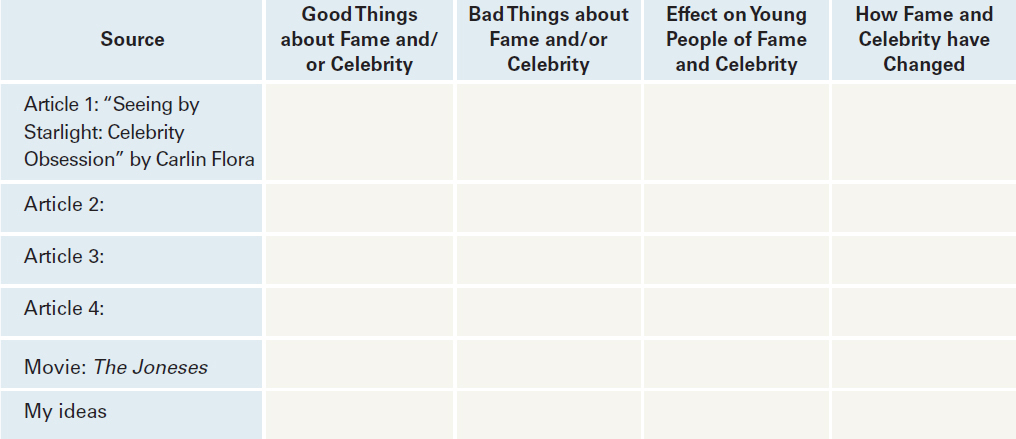CHARTING
CHARTING
Another way to review the materials is to make a chart that covers all the readings, similar to the one you completed at the end of Chapter 2, Active and Critical Reading, in the main text. You can do this article by article, or topic by topic. Let’s look at an example of each.
Typically, you would use an article-by-article chart to prepare for an essay exam in an English composition class. As you can see from the example, each article has its own row, with columns to list the main points, key details (including, possibly, quotes), and the student’s notes and ideas. You can copy the chart into your notebook or download the chart here.

Filling out a chart like this one helps you to review the material, see the big picture, and identify connections between the readings—all of which, in turn, make it easier for you to come up with a thesis for your essay exam.
What if your essay will cover only one book or a couple of articles, or will be based on your personal observations and experience? In such cases, a chart is still useful, but you would want to use a topic-by-topic chart. For example, here’s a chart based on the theme of fame and celebrity. The course covered several articles on the theme, and the student did not know what the instructor would ask about on the essay exam. In class discussions and the instructor’s comments, however, several key topics kept coming up: positives and negatives of fame and celebrity, effects on young people, and changes over time. The student can chart examples that relate to these topics through different articles and other sources that the student considered. Not every box will be filled in because not every source deals with every topic.

Charting can be extremely useful for helping you synthesize what you know. Visual learners especially like to make charts. If your instructor allows you to bring a page of notes into the exam, your chart would be a great thing to have on that page. For more on charting, see Chapter 2, Active and Critical Reading, page 000 in your book.
Let’s review. So far, we’ve learned that the best way to reduce test anxiety and do your best is to prepare well for exams, and we’ve learned that the best way to prepare well is to review the material and synthesize it. Now it’s time to learn how to interpret the exam question.